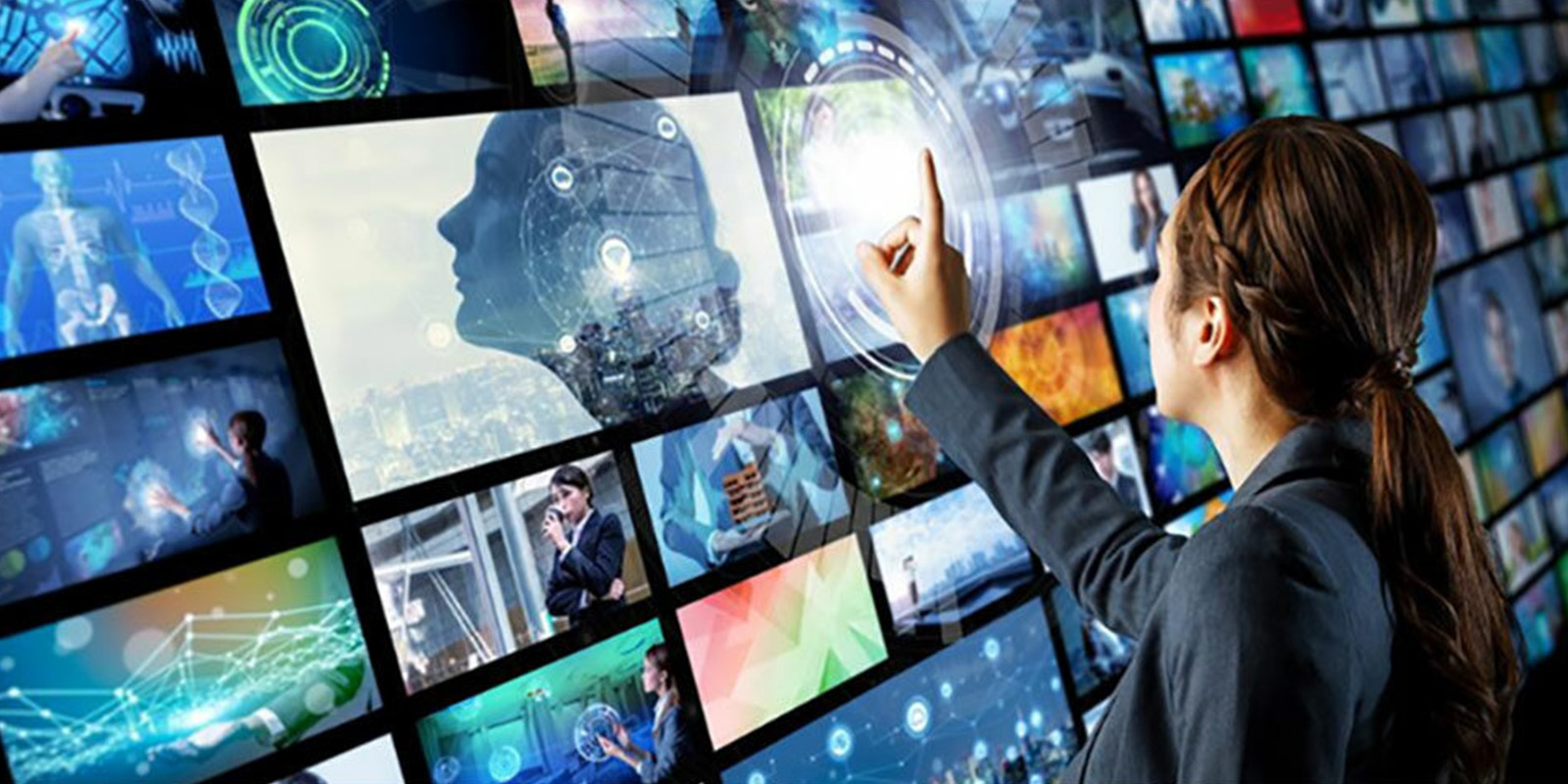
There’s a workplace visualization trend currently sweeping through the corporate world. Video walls that were once used to grab the attention of external visitors are now being turned inward, to engage employees and improve collaboration and productivity. In a world of hybrid working, creating an engaging and inspiring workplace is fast becoming a top priority.
During the lockdowns, productivity dropped 12% and engagement declined 14% among employees who were dissatisfied with remote work, getting worse the longer they stayed in. According to the Harvard Business Review, the top three features employees now want from their workplace visualization are effective collaboration, easier access to tools and resources, and the ability to focus.
Workplaces that embrace multi-use spaces that can support a range of activities are becoming successful. The latest research from Gartner finds that to succeed in a hybrid future, organizations must shift to more human-centric models.
The macro trends driving employee experience
Piet Vanhuyse, Director Segment Marketing at Barco, has been excited by the shift to an employee-centric workplace, in particular when it comes to large video walls. He finds that being able to provide an engaging and immersive visualization platform in different types of settings, with seamless integrations across all areas of the corporate environment is essential. Piet identifies three trends that have converged towards creating a more immersive and employee-centric workplace, and increasing the ROI of large video walls:
- Employees expectations. Employees now expect an improved, engaging, immersive digital experience at work, almost as an extension of their personal life. Workplace visualization is a vital element of that experience, and corporations are increasingly factoring that into their plans to facilitate productive collaboration. Having a workplace visualization strategy also creates an emotional connection with work, supports company culture, and helps employees enjoy the office.
- A continuous and ongoing evolution of display technologies. These have come predominantly as offshoots or inheritors from the consumer TV world: LED created the desire for those technologies. LED and LCD complement the traditional projectors in the workplace and provide a broader and enhanced suite of experiences.
- A dramatic cost curve decline for high quality display technology. The cost curve is allowing increased accessibility and greater ROIs for these enhanced display solutions, across added applications within the workplace. Combined with longer life, lower maintenance, and cloud-access to the displays, the cost of ownership is coming down.
Focus on the experience
According to Workplace Insight, maximizing the potential of workplace design can boost employee engagement. A resilient workplace is one that is most likely to have a positive impact on employee engagement levels; particularly since technology is a critical factor in giving employees more choice and control over where and how they work.

The user experience is all important if enterprises want to keep their employees engaged and productive. “The experience of the lobby or meeting space is good, it’s more conducive to engagement via a feel-good factor and you start seeing better productivity”, says Piet.
In recent years, Piet has seen the move from providing basic infrastructure – tables, chairs, a projector, or screen – to one that is more holistically focused on deepening the levels of emotional engagement. The aim is now to achieve a higher level of cognitive experience, both relaxation and engagement, enabled by technology in the space. A display can be very important in ensuring both ease of use and in facilitating, even inspiring, the discussion. Technology and display size, therefore, have a clear impact on the level of emotional engagement.
Achieving emotional engagement
Choosing the right content can help organizations achieve the objective to engage, excite and inspire people is as important as the type and size of display you use – in some cases even more so. Whether content for workplace visualization is managed by the communications function, creative team, HR or IT, Piet believes that the key is to have a clear mission for what you want to accomplish with it, and that the function that owns that mission understands and drives it: “They’re not just accountable for filling the screens or shifting the content every week, they have to have a clear mission for what they’re trying to accomplish.” The display is a powerful enabler of the overall objectives for the organization.
When there is a clear purpose behind the content, workplace visualization strategies have a strong impact on customers and employee satisfaction. The power of branding and corporate identity has become more important in the last two decades as information flow via the internet made the world flatter, allowing organizations to extend their brand globally, continuously and extensively through digital marketing. But to leverage that internally, you need a complimentary image, ethos, and culture within.
Workplace visualization can reinforce and enhance that culture, taking it to new levels with the advancement of large video walls. This impacts your talent, employee retention and productivity which goes beyond the initial cost of the investment providing bigger returns for your business. It allows you to harness the power of perception and meld it with the value of reality.
(2022, September 7). Commercial Integrator. Retrieved from https://www.commercialintegrator.com/digital_signage/video_walls/workplace-visualization-understanding-the-purpose-of-display-content/

